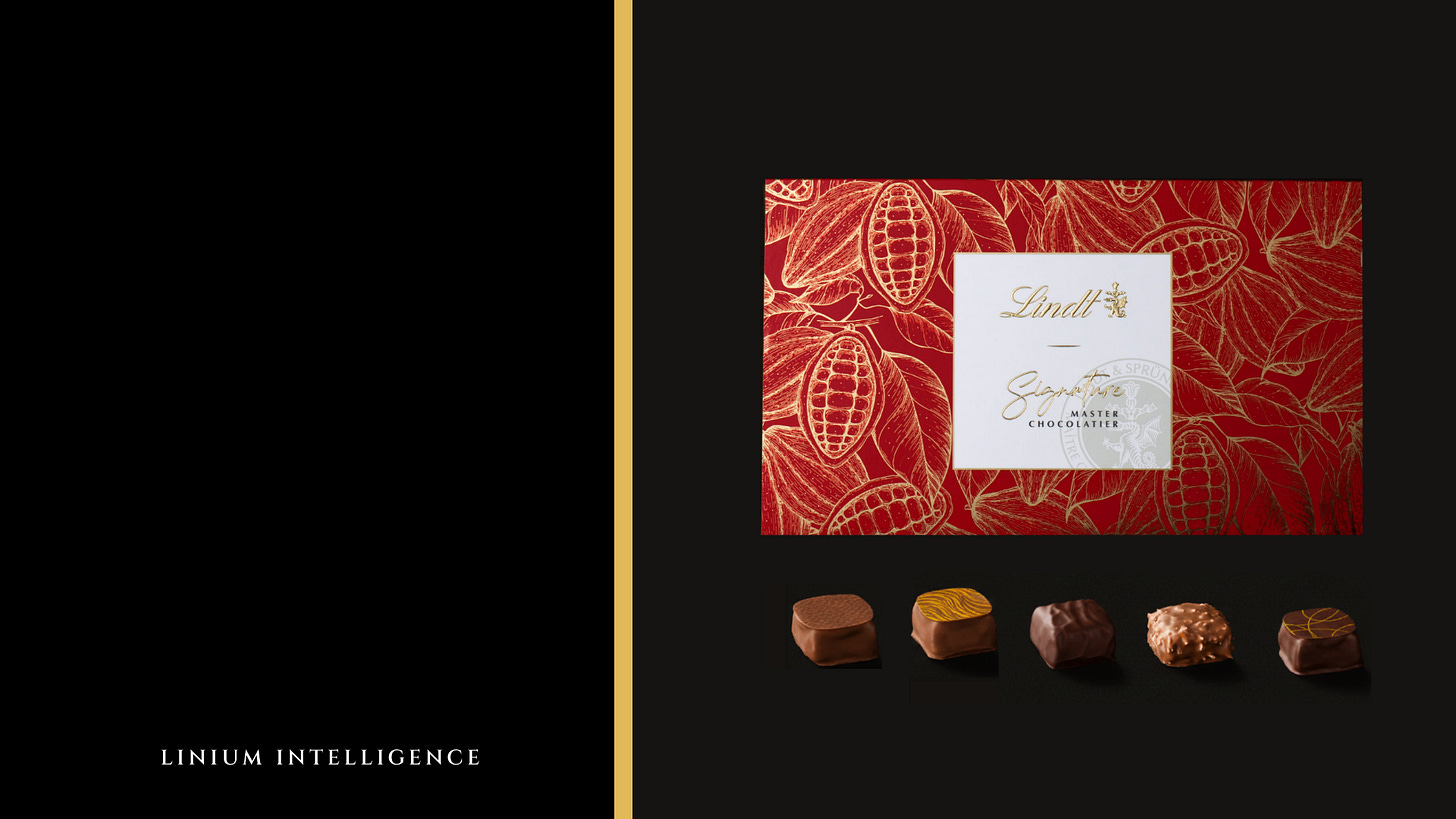Lindt Japan Unveils Signature Praline: A French-Inspired Artisan Collection
Lindt & Sprüngli Japan will launch “Signature Praline” on 27 November, marking the brand’s first true artisan chocolate line in the market. Created by French Master Chocolatier Arnaud Ragot over a two-year development period, the collection comprises seven pralines presented in an elegant jewellery-box-style gift case.
Flavours showcase premium global and Japanese ingredients including yuzu, delicate tea leaves, aromatic nuts and raspberries. The assortment will be offered in 8-piece, 16-piece and 28-piece boxes and sold exclusively through 25 Lindt boutiques nationwide, selected pop-ups and the official online store for a limited period.
The launch arrives amid an exceptionally active year for premium chocolate in Japan, with both international and domestic houses accelerating limited-edition releases, seasonal innovation and localisation strategies.
Key Industry Trends Observed In The Japanese Chocolate Market This Year
Strong incorporation of Japanese citrus (yuzu, mandarin, sudachi, amanatsu): Yuzu remains among the top local flavors, appearing in Pierre Marcolini Ganache Pur Mandarin & Yuzu bon bon, Lindt Signature Praline, Seiste Citrus Box featuring Kito yuzu among numerous others. Brands treat it as a versatile luxury note rather than a novelty.
Persistent Dubai-style pistachio-kadayif trend: Originating in a few years ago, the pistachio-and-kadayif combination continues into late 2025 in Japan with launches from Lindt (Dubai-style bar, praline, countline and limited 6,000-cup chocolate drink), & Earl Grey, and several smaller houses, confirming its transition from viral fad to mainstream premium offering.
Alcohol-infused collections (spirits, liqueurs, champagne): Sophisticated pairings are widespread. Examples include ROYCE’ four-spirit praline box (Hennessy XO, Myers’s Rum, 20-year Grappa, Port Charlotte), Lindt’s Rum Raisin drink with Negrita rum, Pierre Marcolini’s sake-pistachio Ganache Pur and multiple champagne-strawberry nama releases demonstrate growing consumer comfort with subtle alcohol notes.
Textural innovation and “experiential” eating formats: Brands are deliberately engineering chocolates to be eaten in specific ways – frozen, chilled, at room temperature, or layered for evolving mouthfeel. Godiva launched its 2025 Summer Collection with an explicit “freeze for ice-cream-like snap and cool melt” instruction; Lindt promoted its Mini Pralines Ice series for chilled consumption; ROYCE’ introduced multi-layer Florentine sandwiches and crisp-feulletine batons; and numerous houses added puffed grains, caramelised biscuit fragments, crepe dentelle (La Maison du Chocolat Batônnet Praliné) or kadayif for deliberate crunch. These launches signal a shift from passive consumption to active, temperature- and texture-driven sensory experiences.
Hyper-seasonal rotation with strict flavour calendars and visual storytelling: The Japanese premium chocolate market operates on a near-monthly seasonal rhythm that drives urgency and collectability. Spring is dominated by sakura (Lindt Lindor Sakura & Cream, ROYCE’ multi-format sakura range, KitKat’s graduated-pink bar); early summer pivots to citrus and tropical escape notes (white peach, piña colada, lemon-potato-chip chocolate, Malibu-coconut bonbons); autumn centres on chestnut, mont blanc, sweet potato and baked-apple profiles (ROYCE’ extensive chestnut lineup, KitKat Mont Blanc, Mary Chocolate sweet-potato tablets); while winter shifts to richer, warming themes including rum-raisin, shortbread, spiced caramel and artisan praline collections (Lindt Signature Praline, upcoming Lindt Rum Raisin drink, Godiva winter tablets). Each season is accompanied by highly photogenic packaging and colour palettes, reinforcing chocolate as a seasonal lifestyle accessory and enabling brands to sustain a continuous stream of limited-edition drops throughout the year.

